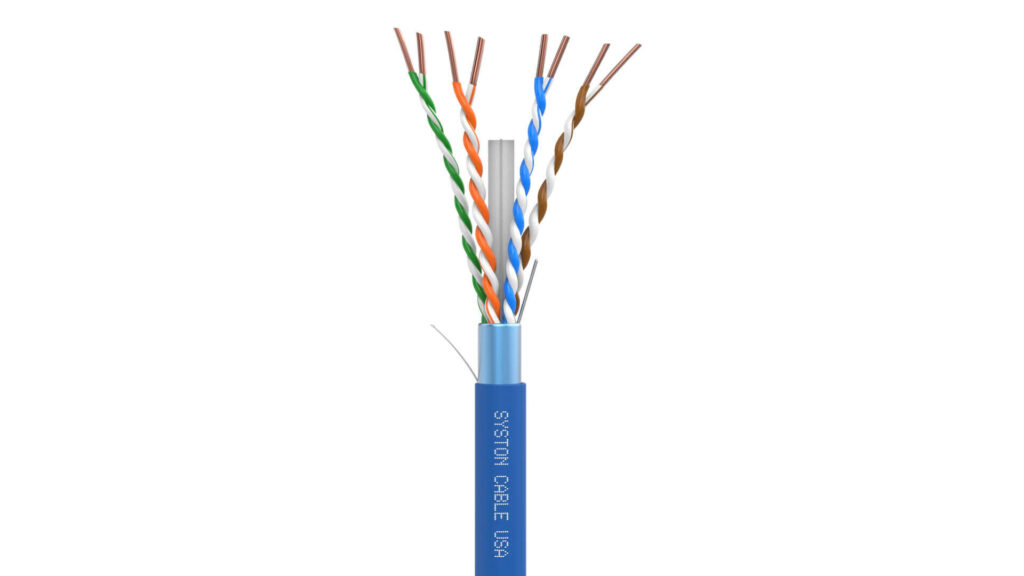
Cat6a Cable
In today’s digital landscape, fast and stable connectivity is essential. Whether you’re streaming high-definition media, managing cloud servers, or deploying a business network, using the correct cable is non-negotiable. Among the top choices is Cat6a cable, a high-performance Ethernet cable built for demanding applications and future scalability. This blog uncovers the role of Cat6a cables in modern networking and why they outperform older cable standards.
How Is Cat6a Cable Structured?
Cat6a stands for “Category 6 augmented.” It is a twisted pair Ethernet cable designed to carry data over long distances at ultra-fast speeds, with minimal signal loss.
- Constructed using 23 AWG copper conductors for better conductivity
- Features thicker outer sheathing and tighter twists in each wire pair
- Equipped with enhanced shielding to minimise interference
- Supports both shielded (STP) and unshielded (UTP) configurations
Its improved design allows it to deliver stable, high-speed connections in settings where performance cannot be compromised.
What Performance Can You Expect from Cat6a?
Cat6a cable is engineered to meet the demands of 10 Gigabit Ethernet networking, making it a reliable choice for high-performance systems.
- Delivers data speeds up to 10 Gbps
- Maintains full bandwidth over 100 meters
- Operates at a frequency of up to 500 MHz
- Supports high-density data transmission with low signal attenuation
This performance consistency makes Cat6a an excellent option for both backbone networks and workstations requiring uninterrupted connectivity.
Where Does Cat6a Outshine Other Cables?
Compared to Cat5e and Cat6, Cat6a offers several key improvements that elevate network stability and speed.
- Outperforms Cat5e (1 Gbps, 100 MHz) in bandwidth and speed
- Extends 10G performance further than Cat6 (which drops after 55 meters)
- Provides better protection against alien crosstalk
- Handles higher power delivery over PoE setups without overheating
This makes Cat6a a forward-looking solution that ensures networks stay efficient as bandwidth demands increase.
What Environments Benefit Most from Cat6a?
Cat6a is well-suited to a wide range of applications where data traffic, interference, or distance are potential issues.
- Commercial offices and enterprises with high bandwidth usage
- Data centres requiring ultra-fast data transfer between servers
- Industrial zones with substantial electromagnetic interference
- Residential installations with smart devices and gigabit routers
- Healthcare facilities and educational campuses running multiple endpoints
The cable’s robust structure and high capacity make it ideal for any environment where long-term reliability is essential.
What Installation Considerations Should Be Kept in Mind?
While Cat6a delivers premium performance, it does require careful planning during installation due to its bulkier profile.
- A thicker diameter may require wider cable trays or conduit space
- Less flexible than Cat5e or Cat6, especially in tight bends
- Requires compatible keystone jacks, patch panels, and tools
- Shielded versions need grounding for optimal EMI protection
Despite these requirements, once properly installed, Cat6a offers a dependable and maintenance-light cabling solution.
What Cable Types and Ratings Are Available?
Depending on your installation needs, Cat6a is available in different formats to suit varied environments.
- Plenum-rated (CMP): Safe for air ducts and ceilings due to flame resistance
- Riser-rated (CMR): Ideal for vertical runs between floors
- Outdoor-rated: Protected against UV, moisture, and temperature extremes
- Patch cables: Shorter versions for connecting devices within network racks
Choosing the correct rating ensures the cable remains compliant with local building codes and functions reliably over time.
Can Cat6a Be Used in PoE Systems?
Cat6a cables are highly compatible with PoE (Power over Ethernet), which combines power and data in a single cable. This capability is crucial for modern network deployments.
- Supports PoE and PoE+ standards with minimal voltage drop
- Reduces heat build-up compared to thinner cables
- Powers devices like IP cameras, Wi-Fi access points, and VoIP phones
- Minimises installation cost by eliminating separate power runs
As more network devices shift to PoE, Cat6a’s ability to handle power and data makes it a convenient and efficient choice.
Is Cat6a Backward Compatible?
Cat6a cables can integrate smoothly into existing network infrastructures due to their backward compatibility with older Ethernet standards.
- Compatible with Cat6 and Cat5e components
- Works with gigabit switches, routers, and network cards
- Can be installed gradually within existing setups
This flexibility allows users to phase upgrades over time rather than replacing the entire cabling system in one go.
Why Is Cat6a a Smart Long-Term Investment?
With digital technologies evolving rapidly, the cabling behind your network must be future-ready. Cat6a not only supports today’s speed requirements but is also positioned to handle the next wave of innovations.
- Scales easily with growing data needs
- Offers performance security for 10G Ethernet networks
- Reduces the risk of bottlenecks as traffic increases
- Ensures compliance with upcoming network performance standards
Choosing Cat6a now avoids the need for premature replacements later, making it both a cost-effective and performance-wise decision.
Conclusion
Cat6a cable stands out as a powerful choice for high-speed, interference-free, and future-proof networking. Whether you’re upgrading a small office, building an extensive enterprise network, or installing a smart home system, Cat6a delivers consistent and scalable connectivity. With better shielding, longer reach at 10 Gbps, and full PoE support, it provides the reliability modern networks demand, now and in the future.



